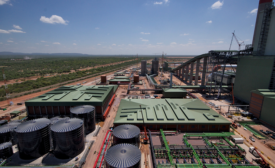Power & Industrial
Energy Viewpoint
By Mike Beehler and Meghan Calabro
Read More
Infrastructure
Two Consortiums Picked for East African Power Plant
80-MW Rusumo hydro project to provide electricity to Tanzania, Rwanda and Burundi
Read More
US Approves $2 Billion of Canada Cross-Border Transmission
Two projects will bring low-cost renewable energy to American customers
Read More
Global Sourcebook
Pipeline and LNG Work Keeps Projects Flowing
Sector firms expect robust market for engineering, construction
Read More
Global Sourcebook
Market Shifts Help Distribution Generation
Growing reliance on renewables will require more flexibility
Read More
The latest news and information
#1 Source for Construction News, Data, Rankings, Analysis, and Commentary
JOIN ENR UNLIMITEDCopyright ©2024. All Rights Reserved BNP Media.
Design, CMS, Hosting & Web Development :: ePublishing











